2023.08.02.94
Files > Volume 8 > Vol 8 No 2 2023
Effect of adding chemical, organic fertilizers and spraying seaweed extracts on the availability of NPK and organic material in calcareous soil
Auf Abdul Rahman Saleh1 , Basem Rahem Bader2*
1- Department of Soil Sciences and Water Resources- College of Agriculture- University of Diyala [email protected]
2- Department of Soil Sciences and Water Resources- College of Agriculture- University of Diyala
Corresponding author. [email protected]
Available from: http://dx.doi.org/10.21931/RB/2023.08.02.94
ABSTRACT
A field experiment was carried out in the agricultural season 2021-2022 in one of the farming fields in the region of Muqdadiya, Al-Harouniya district, located 40 km northeast of Baquba district of Diyala governorate. (Soil Survey Staff, 2006). It is located at a longitude of 53° 34' N and latitude of 56° 04° 45° S. The experiment aimed to study the effect of adding chemical and organic fertilizers and spraying seaweed extracts on NPKS concentrations and cauliflower yield. The investigation included three factors; the first factor was the addition of organic fertilizer (buffalo waste) at three levels (0, 5 and 10%) of the terrace size, which M1, M2 and M3 respectively symbolize. It was added at a depth of 0-30 cm a month before planting the seedlings in the field. The second factor was the addition of NPK compound chemical fertilizer (20:20:20) at two levels (0 and the full fertilizer recommendation is 300 kg H-1 when planted as a feed) and symbolized by C1 and C2, respectively. The third factor is spraying seaweed extract with three levels (0, 2 and 4) ml L-1 represented by A1, A2 and A3. The experiment results showed that adding chemical fertilizer significantly affected the availability of organic material in the soil. The 2C treatment (and the full fertilizer recommendation of 300 kg H-1) outperformed and reached 2.96 gm kg-1; nitrogen availability in the soil amounted to 2.96 %. As well as the availability of phosphorous in the soil, which amounted to 76.28 mg P kg 1-soil, and potassium availability in the soil amounted to 76.28 %. The addition of buffalo manure to calcareous soils significantly affected the readiness of the organic material. Also, treatments M2 and M3 outperformed in soil with a value of 3.34 and 23. 4 g/kg-1, and nitrogen availability in soil amounted to 29.88 and 31.25 mg N kg-1-. The M3 treatment also excelled in the availability of phosphorous in soils, which amounted to 86.98 mg P kg-1-soil mg M kg-1-soil. The availability of potassium in the soil amounted to 361.33 %. The triple interaction between the studied factors significantly affected the availability of organic material in soils. The M2×C2×A3 treatment also excelled in recording the highest value, which was 3.85 gm kg-1, nitrogen availability in soil amounted to 37.75 %, phosphorous availability in soil amounted to 94.16 mg P kg-1 and potassium availability in soil amounted to 436.42 mg kg1-soil.
Keywords: chemical fertilization, organic fertilization, seaweed extracts.
INTRODUCTION
The increasing consumer wealth and concerns about food safety have led to the return of consumers' desire for organic food as a means to achieve food security. Organic farming constitutes an essential source for securing farmers, increasing their production of vegetables and filling the shortage in them 4. Organic farming also encourages maximum use of the natural biological processes of farm management in terms of soil fertilization and pest control, which means no or less use of synthetic fertilizers, pesticides or plant and animal growth enhancers. All of these practices increase the diversity of bacteria and insects that live in the soil and provide a good food source for pollinators in terms of pollen and nectar 5. Many comparisons between organic and conventional farming also indicate that organic farming enhances the quality of food crops and soil quality. It is a system known as organic or conservation agriculture, as it maintains soil efficiency by increasing the percentage of organic material and nutrients in the soil and plants. Thus, maintaining human health 10, organic farming has been adopted as a new and sustainable agricultural technology because of its environmentally friendly nature and health products. It is an effective technology in reducing atmospheric carbon concentration and is more efficient in using less energy and providing moisture to the soil. Organic farming also relies on biosolids and crop rotation, mulching, non-synthetic fertilizers, no-till, integrated nutrients, pest management, etc., for crop management and yield 8.
The high input of synthetic fertilizers on the land has led to environmental pollution, continuous changes in the soil environment, and physical and chemical conditions. This has led to a significant reduction in the natural soil fertility hampered agricultural productivity and human health. Bio-based nutrient sources such as marine algae are also considered complete nutrients for agriculture 9. due to their antioxidant properties and their content of various bioactive chemicals, secondary metabolites, dietary fibers, vital amino acids, phytochemicals, vitamins, polyunsaturated fatty acids and other minerals. They can be used as nutrients and fertilizers 12.
The research aims to know the effect of adding chemical and organic fertilizers and spraying seaweed extracts on the availability of NPK and organic material in calcareous soil.
MATERIALS AND METHODS
A field experiment was carried out in the agricultural season 2021-2022 in one of the farming fields in Muqdadiya, Al-Harouniya village, located 40 km northeast of Baquba district of Diyala governorate. (Soil Survey Staff, 2006) It is located at longitude 33°53'34N and latitude 04°4556'S. The experiment also aimed to study the effect of adding chemical and organic fertilizers and spraying seaweed extracts on NPKS concentrations and organic material in calcareous soil. The investigation included three factors; the first factor was the addition of organic fertilizer (buffalo waste) at three levels (0, 5 and 10%) of the terrace size, which M1, M2 and M3 respectively symbolize. It is also added at a depth of 0-30 cm a month before planting the seedlings in the field. As for the second factor, the addition of the compound chemical fertilizer NPK (20:20:20) at two levels (0 and the full fertilizer recommendation is 300 kg H-1 when planting as a feed) and its symbol is C1 and C2, respectively. A sample was taken randomly from different locations and mixed to be a composite sample representative of the field soil at a depth of 0-30 cm. It was dried and ground with a wooden hammer and passed through a sieve with a diameter of 2 mm to perform the physical and chemical analyses shown in Table 1. Soil preparations were carried out for cultivation, including plowing, smoothing and leveling. It was divided into three sectors, each containing 9 coefficients and the dimensions of the experimental unit (3 * 2). Also, each experimental unit includes 3 lines, the number of plants in the experimental unit is 18. The distance of each irrigation line from the edge of the terrace is 60 cm. The distance between one irrigation pipe and another is 70 cm, and between one seedling and another is 50 cm. As well as the number of seedlings in the experimental unit is 18 plants. A distance of 1 m will be left between the replicates, as well as a distance of 0.5 m between the experimental units, i.e., the number of experimental units is 54 experimental units. The data were analyzed according to the Duncan test. The analyses were carried out in the Laboratory of Soil and Water Resources Sciences, College of Agriculture, Diyala University, and the following characteristics were studied:
Organic material (gm kg-1)
Estimation was performed using potassium dichromate, concentrated sulfuric acid, phosphoric acid and diphenylamine, then sintered with ammoniac ferrous sulfate according to the Walkley and Black method mentioned in 11.
Concentrations of ready nitrogen in the soil (mg N kg 1- soil):
The estimation was done by extracting the soil with potassium chloride (2N), adding magnesium oxide and converting nitrogen from nitrate to ammonium by adding Devarde alloy as a reducing substance. It was estimated using a microclad device using the method mentioned in 3.
Ready phosphorous concentrations in soil (mg/kg-1 soil):
It was estimated using sodium bicarbonate (0.5M) at PH8.5. Ammonium molybdate and ascorbic acid are added until a blue color develops. A spectrophotometer is used at wavelength 882, as stated in 11.
Ready potassium concentrations in soil (mg Kkg-1 soil):
The determination of ammonium acetate was carried out by using a flame photometer, as stated in 11.
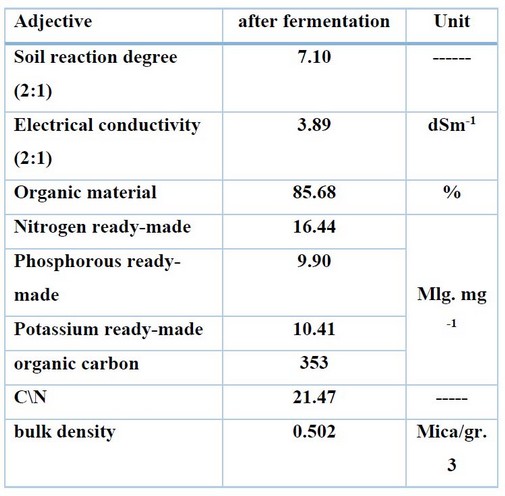
Table 1. shows the analysis of organic matter
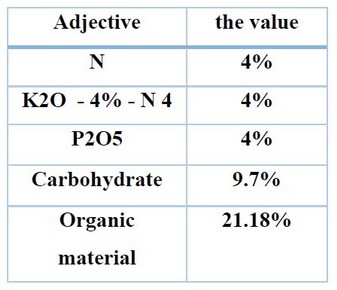
Table 2. Showing analysis of marine algae extracts.
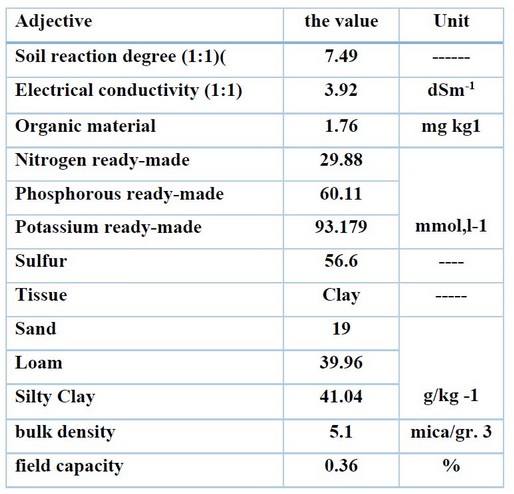
Table 3. Some chemical and physical properties of the study soil before planting
RESULTS
Readiness of organic material in calcareous soils (g/kg-1).
The results of Table (2) showed that the addition of chemical fertilizers had a significant effect on the readiness of organic material in the soil, as the treatment C2 excelled in recording the highest value and amounted to 2.96 gm kg-1, compared to the comparison treatment which amounted to 2.73 gm kg-1, with an increased rate of 42.8.
The addition of buffalo manure to calcareous soils had a significant effect on the availability of organic material in soils, as the two treatments, M2 and M3, excelled in recording the highest value, which was 3.34 and 23. 4 g kg-1, compared to the comparison treatment, which amounted to 1.79 g kg-1, with an increased rate of (06.91%).
The addition of seaweed extracts led to no significant effect on the availability of organic material in the soil.
The interaction treatment between chemical fertilizer and organic fertilizer led to a significant increase in the availability of organic matter in the soil, as the M2×C2 treatment excelled in recording the highest value, which amounted to 3.57 gm kg-1, compared to the C1M1 treatment, which amounted to 1.76 gm kg-1.
The interaction treatment between organic fertilizer and seaweed extracts led to a significant increase in the availability of organic material in the soil, as the treatments M2×A1, M2×A2, M2×A3, M3×A1, M3×A2, M3×A3 excelled in recording the highest value of the availability of the material. The organic material in the soil amounted to 3.24,3.21, 3.57,3.33,3.58, and 3.33 g kg-1 compared to the treatments M1×A1, M1×A2, M1×A3, and it amounted to 1.62, 1.89, 1.85 g kg-1.
The bilateral interaction between chemical fertilizers and seaweed extracts led to a significant increase in the availability of organic material in the soil. As the treatments A1×C2, A2×C2, 3A×C2, and A3×C1 excelled in recording the highest value, which amounted to 2.94,3.01, 2.93, 2.90 g kg -1, compared to treatment A1 x C1 and it was 2.52 g kg-1.
The triple interaction between the studied factors had a significant effect on the availability of organic material in the soil, as the treatment M2×C2×A3 excelled in recording the highest value, which amounted to 3.85 g/kg-1, compared to the treatment M1×C1×A1 which amounted to 1.34 g/kg-1.
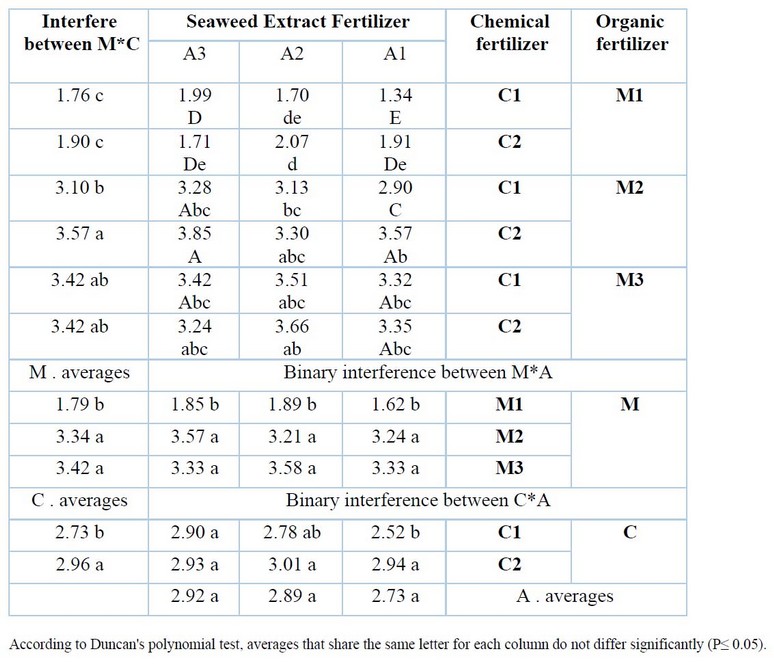
Table 4. Effect of adding chemical and organic fertilizers and spraying seaweed extracts and their interaction on the availability of organic material in soils.
Nitrogen availability in calcareous soils (mg N kg 1 – soil).
Table (5) shows that adding chemical fertilizer significantly affected the nitrogen availability in the soil. Treatment C2 excelled in recording the highest value and amounted to 31.43 %, compared to treatment C1, which amounted to 26.25 %, with an increased rate of 73.19%.
The addition of buffalo manure to the soil had a significant effect on the nitrogen availability in the soil, as the two treatments, M2 and M3, recorded the highest values, which were 29.88% and 31.25 %, compared to treatment M1, which amounted to 25.40 %, with an increased rate of 03.23%.
The addition of seaweed extracts led to a significant effect on the nitrogen availability in the soil, as the two treatments, A2 and A3, were superior in recording the highest value, which amounted to 29.13% and 30.60 % compared to treatment A1, which was 26.80 %, with an increased rate of 17.14%.
The interaction treatment between chemical fertilizer and organic fertilizer led to a significant increase in nitrogen availability in the soil, as the M2×C2 and M3×C2 treatment outperformed in recording the highest value, amounting to 32.25 and 34.38 % compared to the treatment M1×C1 which amounted to 23.12 %.
The interaction treatment between the organic fertilizer and seaweed extracts also led to a significant increase in nitrogen availability in the soil, as the M3×A3 treatments excelled in recording the highest value and amounted to 33.36 % compared to the two treatments, M1×A1, M1×A3, which amounted to 24.14, 25.36 mg N kg -1 soil.
The bilateral interaction between chemical fertilizer and seaweed extracts led to a significant increase in nitrogen concentration in calcareous soils, as the treatment A2×C2 excelled in recording the highest value, amounting to 32.69 %, compared to treatment A1×C1 which amounted to 23.13 %.
The triple interaction between the studied factors also had a significant effect on nitrogen availability in soils, as the M3×C2×A3 treatment excelled in recording the highest value, which amounted to 37.75 %, compared to the treatment M1×C1×A1, which was 20.56%.
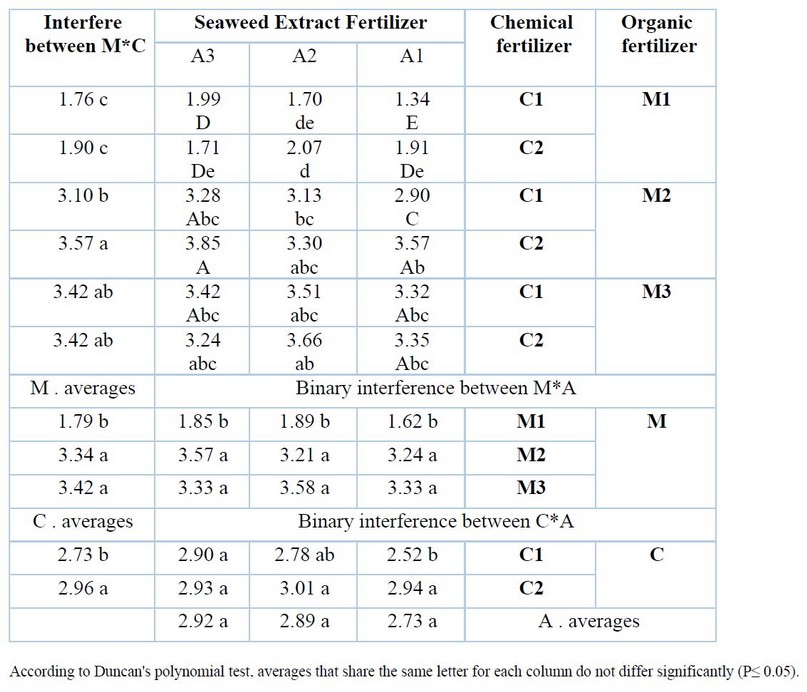
Table 5. Effect of adding ch.emical and organic fertilizers and spraying seaweed extracts and their interaction on nitrogen availability in calcareous soils
Readiness of phosphorous in calcareous soils.
The results of Table (6) showed that the addition of chemical fertilizers had a significant effect on the availability of phosphorous in soils, as treatment C2 excelled in recording the highest value and it reached 76.28% compared to treatment C1, which amounted to 52.98% with an increased rate of(71.114 and 04.156%).
Adding buffalo manure to calcareous soils significantly affected the phosphorous concentration in soils, as the M3 treatment recorded the highest value and reached 86.98% compared to an increase of (33.97%).
The addition of seaweed extracts significantly affected the availability of phosphorous in soils, as treatments A1 and A3 excelled in recording the highest value, 66.97% and 65.30 %. In contrast, treatment A2 recorded the lowest value, 61.62 %.
The interaction treatment between chemical fertilizers and organic fertilizers led to a significant increase in the availability of phosphorous in soils, as the M3×C2 treatment excelled in recording the highest value, which amounted to 92.49 %, compared to the treatment M1×C1, which amounted to 11.75 %.
The interaction treatment between the organic fertilizer and seaweed extracts also led to a significant increase in the phosphorous concentration in the soil, as the M3×A2 treatment excelled in recording the highest value and reached 88.74%. While the treatments M1×A1, M1×A2, M1×A3 scored 34.56, 33.18, and 34.17%. The bilateral interaction between chemical fertilizers and seaweed extracts led to a significant increase in soil phosphorous availability. The treatment A2×C2 excelled in recording the highest value and reached 80.15%, while the treatment A1×C1 recorded the lowest. The value amounted to 61.78 %.
The triple interaction between the studied factors significantly affected phosphorus availability in soils. The treatments 2M×C2×A1, 2M×C2×A2, and 2M×C2×3A excelled in recording the highest value, which amounted to 93.92%, 94.45%, 94.16 %, compared to the treatments. M1×C1×A1, M1×C1×A2, M1×C1×A3 amounted to 10.89, 11.84, 12.51 %.
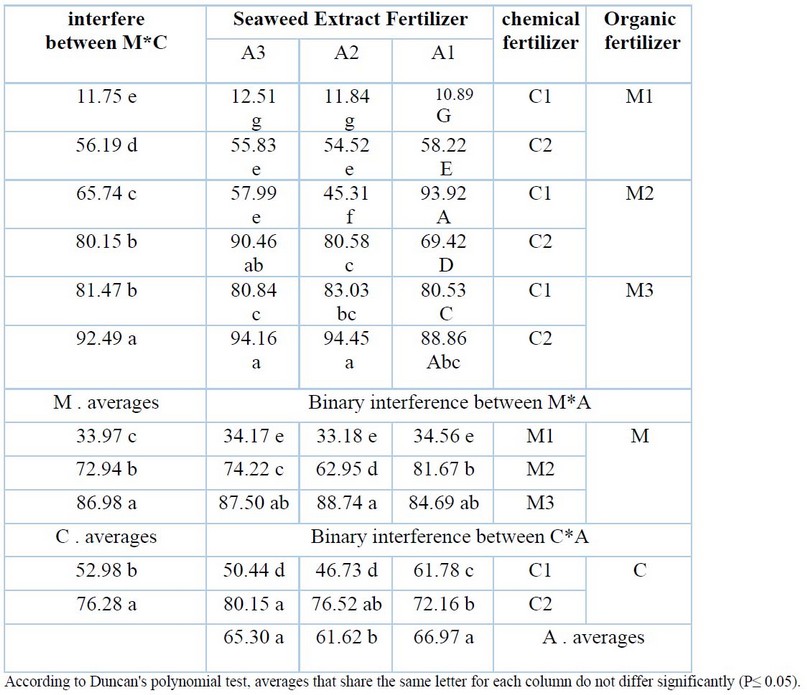
Table 6. Effect of adding chemical and organic fertilizers and spraying seaweed extracts and their interaction on phosphorous availability in calcareous soils.
Potassium availability in calcareous soils (%).
The results of Table (7) showed that the addition of chemical fertilizer had a significant effect on the availability of potassium in the soil, as treatment C2 excelled in recording the highest value and reached 341.98 %, compared to treatment C1 which amounted to 250.30 %, with an increased rate of (62.36%).
The addition of buffalo manure to calcareous soils had a significant effect on the availability of potassium in the soil, as the M3 treatment recorded the highest value, which amounted to 361.33 mg K kg-1, compared to treatment M1, which amounted to 204.60 %, with an increased rate of (60.76 and 61.57).
The addition of seaweed extracts led to a significant effect on the availability of potassium in the soil. The two treatments, A2 and A3, excelled in recording the highest values, 310.72% and 310.00 %, while treatment A1 recorded 267.69 %, with an increased rate of (15.80%).
The interaction treatment between chemical and organic fertilizers led to a significant increase in phosphorous availability in calcareous soils. The M3×C2 treatment excelled in recording the highest value, which amounted to 420.42%, compared to the treatment M1×C1, which amounted to 180.82 %.
The interaction treatment between organic fertilizer and seaweed extracts also led to a significant increase in potassium availability in the soil, as the M3×A2 treatment excelled in recording the highest value and reached 371.57 %. In comparison, M1×A1 treatments recorded the lowest value and reached 187.05 %.
The bilateral interaction between chemical fertilizer and seaweed extracts led to a significant increase in potassium availability in soil, as the treatments A2×C2,3 A×C2 excelled in recording the highest value, amounting to 355.12 and 364.20 %. In contrast, the treatment A2×C1 recorded the lowest value. It amounted to 266.34 %.
The triple interaction between the studied factors also significantly affected potassium availability in calcareous soils. The treatments 2M×C2×A2 and 2M×C2×3A excelled in recording the highest value, amounting to 406.20% and 436.42 %, while the treatments M1×C1 recorded A1 × the lowest value, which was 172.64 %.
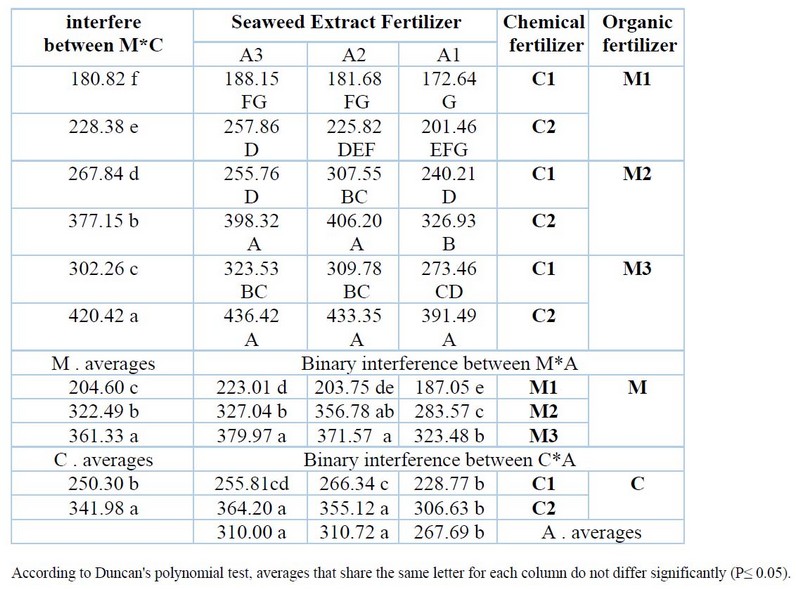
Table 7. Effect of adding chemical and organic fertilizers and spraying seaweed extracts and their interaction on potassium availability in Calcareous soils.
DISCUSSION
The results of Tables 2, 3, 4 and 5 showed that adding chemical fertilizer significantly affected the availability of organic material, potassium, nitrogen and phosphorus in the soil. This may be because adding organic material to the soil led to its accumulation in the soil and an increase in its readiness. This is consistent with the findings of 18. As for the concentration of ready nitrogen, adding organic fertilizers increased the percentage of ready nitrogen in the soil. The reason may be due to the role of organic fertilizers in improving the chemical and biological characteristics. The decomposition products of this substance increase the availability of ready nitrogen in the rhizosphere and increase the activity of organisms in the soil, such as nitrogen-fixing organisms. This is consistent with 15,22. Organic fertilizer is a nitrogen source, increasing its percentage in the soil. As for phosphorus, the addition of organic fertilizers had significant effects on increasing the concentration of ready-made phosphorous in the soil solution. The reason is the possibility of decomposing the organic fertilizer and releasing amino and organic acids that dissolve the precipitated phosphate compounds and increase its readiness. It contains phosphorous and is continuously supplied to the soil solution. This agrees with 24,25. As for the ready potassium, organic fertilizers reduce the loss of nutrients due to the increase in the positive ionic exchange capacity, which agrees with 23. It also works to liberate or release potassium from minerals by producing organic acids that release potassium-containing mineral compounds in the soil and turn them into a ready form. These results are consistent with 20. that organic fertilizer is a good source for preparing potassium in the ground.
The results of Tables 2, 3, 4 and 5 indicated that adding chemical fertilizers significantly increased the soil's readiness of organic material, nitrogen, phosphorous, and potassium. This may be because chemical fertilizers significantly increase the availability of nutrients and thus improve soil ecosystem services. The appropriate use of nutrients can enhance biomass production, increase soil organic material, and improve soil health 13.
The results of Tables 2, 3, 4 and 5 also indicated that adding seaweed extracts significantly increased the availability of nitrogen, phosphorus and potassium in the soil. This may be due to its antioxidant properties and its content of various biologically active chemicals, secondary metabolites, dietary fibers, vital amino acids, phytochemicals, vitamins, polyunsaturated fatty acids, and a high range of elements and nutrients 12.
CONCLUSIONS
Adopting organic fertilizer (10% of the size of the terracing) led to a significant increase in all the studied traits.The use of chemical fertilization in soil fertilization for its significant superiority in all the studied traits. Using seaweed extracts at concentrations (2 and 4 mmol.L-1) for its significant superiority in most studied traits.
.
REFERENCES
1- Gonçalves, Y. D. S., Freitas, M. S. M., Carvalho, A. J. C. D., Vieira, M. E., Peçanha, D. A., Cunha, J. M., & dos Santos, P. C. Potassium sources impact on cassava plant productivity, quality and mineral composition. 2022; Journal of Plant Nutrition, 45(1), 86-94.
2- Bergstrand, K. J. Organic fertilizers in greenhouse production systems–a review. 2022; ScientiaHorticulturae, 295, 110855.
3- Blackes, C. A. Method of Soil Analysis. 1965; Am. Soc. Agron. No. 9 Part 1. Madison,Wisconsin. USA.
4- Boateng, V. F., Donkoh, S. A., &Adzawla, W. Organic and conventional vegetable production in northern Ghana: farmers' decision making and technical efficiency. 2022; Organic Agriculture, 1-15.
5- El-Shafie, H. A. F. Impacts of Organic Farming on Insects Abundance and Diversity. 2022.
6- Hammed,H.A; F.M. Abid, and A.W.R. Hamad . Determination of Iraq(Nigellasativa L.)seed by Atomic absorption spetorphotometeriraqi; 2002; J. Of chem. Vol.28, No(1).
7- Haynes, R.J. A comparison of two modified kjeldhal digestion techniques for multi-element plant analysis with conventional wet and dry ashing methods. Comm. Soil . 1980; Sci. Plant Analysis .11(5): 459-467.
8- Kareem, A., Farooqi, Z. U. R., Kalsom, A., Mohy-Ud-Din, W., Hussain, M. M., Raza, M., &Khursheed, M. M.Organic Farming for Sustainable Soil Use, Management, Food Production and Climate Change Mitigation.In 2022; Sustainable Agriculture (pp. 39-59). Springer, Cham.
9- Mahapatra, D. M., Satapathy, K. C., & Panda, B.Biofertilizers and nanofertilizers for sustainable agriculture: Phycoprospectsand challenges. 2022; Science of The Total Environment, 803, 149990.
10- Montgomery, D. R., Biklé, A., Archuleta, R., Brown, P., & Jordan, J. Soil health and nutrient density: preliminary comparison of regenerative and conventional farming. 2022; PeerJ, 10, e12848.
11- Page, A. I. R.H. Miller and D.R. Keeney. Methods of Soils Analysis Part 2. Chemical and microbiological properties. Amer. 1982; Soc .Agron .Midison .Wisconsin. USA.
12- Pradhan, B., Bhuyan, P. P., Patra, S., Nayak, R., Behera, P. K., Behera, C.Jena, M. Beneficial effects of seaweeds and seaweed-derived bioactive compounds: Current evidence and future prospective. 2022; Biocatalysis and Agricultural Biotechnology, 39, 102242.
13- Sanginga, N., &Woomer, P. L. (Eds.). Integrated soil fertility management in Africa: principles, practices, and developmental process. 2009; CIAT.
14- Weeraddana, C. D. S. Extracts of The Brown Seaweed, AscophyllumNodosum, EffecctArabiadopsisThalIana– MyzusPersicaeInteraction.2012; MS.Thesis, College of Agricultural. Scotia.
15- Ibrahim, and Waldan Ali Abdel Amir. Effect of mineral and organic fertilization and spraying with humic acids and microelements on NPK readiness in soil, growth and yield of maize. Master's thesis. Soil and Water Resources Science. 2019; College of Agricultural Engineering. Baghdad University.
16- Abu Dahi, Yusuf Muhammad, Muayad Ahmad Al-Younis. Guide to Plant Nutrition, Directorate of Dar Al-Kutub for Printing and Publishing, 1989; University of Mosul, Ministry of Higher Education and Scientific Research.
17- Al-Bandawi, Basem Rahim Badr. The Effect of Organic Fertilization, Phosphate Fertilizer Sources and Irrigation Water Quantity on Maize Nitrogen and Potassium Concentration, 2017; Diyala Journal of Agricultural Sciences 9(1):291-302.
18- Jassem, Adnan Aswad and Abboud, Muhammad Ali. Effect of adding ground wild reeds (as an organic matter) on the characteristics of saline soil and the growth and yield of barley (a local variety).2010
019- Al-Khafaji, Aseel Muhammad Hassan, Tel. Effect of organic fertilization from different sources on the growth, yield and quality of contact and seed onion plant. Master Thesis -2010; Department of Horticulture - College of Agriculture - University of Baghdad.
20- Al-Zaidi, Jibril Abbas Muhammad. Effect of Potassium and Organic Fertilizers on Potassium Images in and Outside the Rhizosphere and the Growth of Maize Plant, 2017; Master Thesis. College of Agriculture, University of Al-Qadisiyah.
21- Al-Zaidi, HatemSalloum Saleh. The Interfering Effect of Irrigation Water Quality and Organic and Phosphate Fertilization on Growth and Yield of Brassica Oleracea Var. Botrytis)), 2011; MA thesis. Soil and Water Resources Sciences. College of Agriculture, University of Baghdad.
22- Sarhid, Bassam Ramadan. Preparation of natural chelated fertilizer formulations for zinc and iron and study of their behavior in soil and its effect on the yield of cucumber Cucumtssativas L. under greenhouse conditions. 2013; PhD thesis - College of Agriculture - University of Anbar.
23- Al-Shater, Mohammed Saeed and Al-Dulaimi, Hassan Youssef and Al-Bakhli, Akram. Effect of some organic fertilizers on the basic fertility characteristics of the soil and its productivity of chard. 2011. Damascus University Journal of Agricultural Sciences 27(1):15-28.
24- Al-Azzawi, Osman Muhammad Abdul Rahim. The effect of organic fertilization and spraying of humic and salicylic acids on reducing salt stress in the soil and growth and yield of broccoli (BrassicaOleracesa.L). 2020; Soil science and water resources. College of Agricultural Engineering. Baghdad University.
25- Nasser, KazemMakki. 2016. Kinetics of Phosphorous Release from Phosphate Rock Added with Some Organic Fertilizers in Calcareous Soil, Iraqi 2016; Journal of Agricultural Sciences 47(5):1305-1311.
Received: May 15, 2023/ Accepted: June 10, 2023 / Published: June 15, 2023
Citation: Rahman Saleh A A, Rahem Bader B. Effect of adding chemical and organic fertilizers and spraying seaweed extracts on npks concentrations and cauliflower yield. Revis Bionatura 2023;8 (2) 94. http://dx.doi.org/10.21931/RB/2023.08.02.94
